Il-80 Maxdome
This innocent-looking widebody airliner is in fact the Ilyushin Il-80 Maxdome strategic airborne command post subordinated to the General Staff of the Russian Armed Forces, a counterpart to the U.S. Air Force’s E-4B National Airborne Operations Center aircraft. The order to launch nuclear missiles can be issued from its deck. Four Il-86 airliners were converted into Il-80s and are based at Chkalovskaya, near Moscow. The assisting MiG-29 fighters smoke, as they usually do. Credit: Piotr Butowski
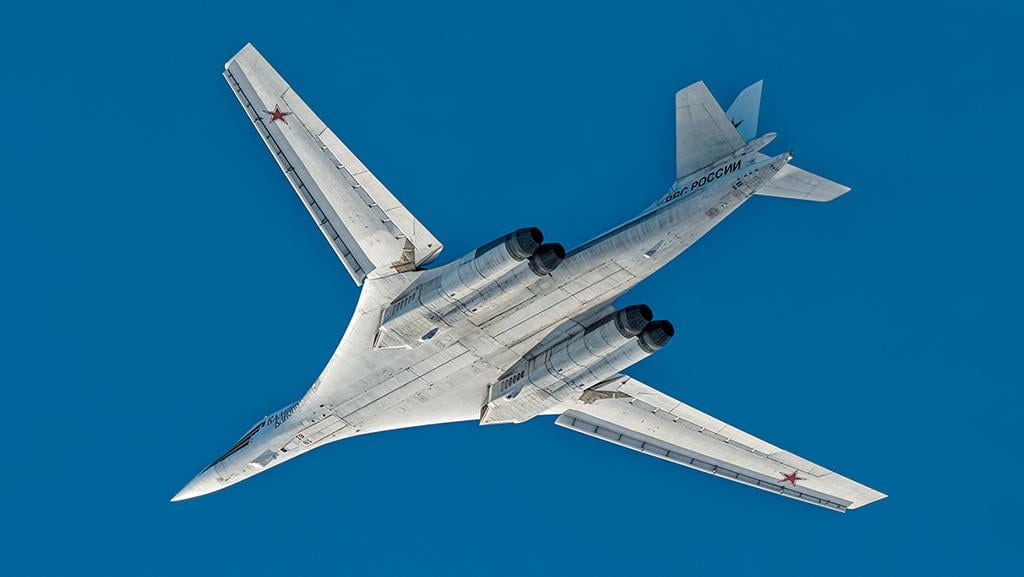
Tu-160 Blackjack
The world’s largest combat aircraft, the Tupolev Tu-160 Blackjack, is capable of covering a distance of 3,700 mi., launching its 2,500-mi. range Kh-101/Kh-102 cruise missiles and returning to base. With inflight refueling, it can fly even farther. During coming upgrades, Blackjacks will receive the new Kh-BD cruise missile, an extended version of the Kh-101/Kh-102 that is supposed to add 50% more range. Credit: Piotr Butowski

Tu-160 Blackjack
The Tupolev Tu-160 Blackjack can carry 12 missiles on two rotary launchers inside the fuselage. The Russian Aerospace Forces have 17 Tu-160s. In January 2018, the Russian defense ministry signed an order for 10 new-production Tu-160M bombers to be delivered in 2021-27. Russia intends to keep Blackjacks in service until the 2060s. Credit: Piotr Butowski

Tu-95MS Bear-H
From 2014 on, Tupolev Tu-95MS Bear-H turboprop missile carriers have been adapted to use new, 2,500-mi.-range conventional Kh-101 (AS-23A) and nuclear Kh-102 (AS-23B) Kodiak cruise missiles. Large Kh-101/102s can only be carried externally. The aircraft takes eight missiles on four underwing pylons. More than 50 Tu-95MS bombers are in active service in Russia; they are the subject of deep Tu-95MSM upgrades. United Aircraft Corp. CEO Yury Slyusar recently announced the first flight of the Tu-95MSM, which took place on Aug. 22. Russia periodically deploys its strategic bombers to conduct out-of-area operations as a power projection tool; they often approach Alaska. Some notable recent international visits were a pair of Bears to Indonesia in December 2017, as well as Blackjacks to Venezuela in December 2018 and to South Africa in October 2019. Tu-95MS bombers, together with Tu-160s, have launched their Kh-101 and Kh-555 (AS-22 Kluge) cruise missiles against targets in Syria. Credit: Piotr Butowski

Tu-22M3 Backfire-C
The variable-geometry, 124-ton Tupolev Tu-22M3 Backfire-C is a substrategic-range platform that delivers heavy, supersonic Kh-22 and Kh-32 missiles against important targets such as command posts, bridges, railway junctions, airfields, rocket launchers and large warships. Credit: Piotr Butowski
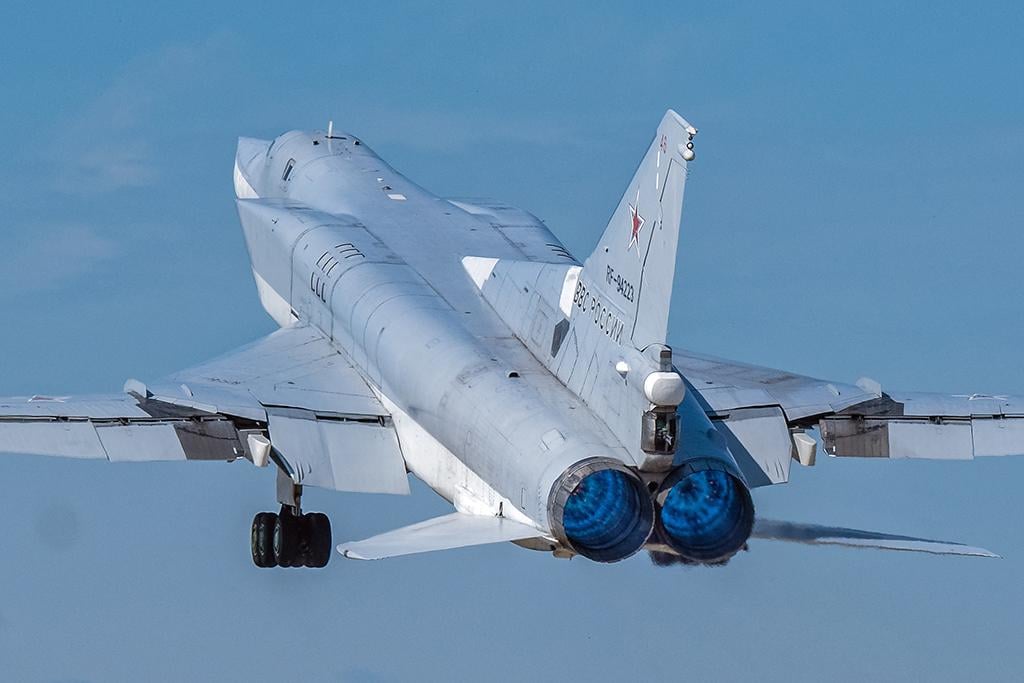
Tu-22M3 Backfire-C
About 60 of Tupolev Tu-22M3 Backfire-C bombers are in active service in Russia. They will receive Tu-22M3M upgrades starting next year, with new systems and weapons, including 900-mi.-range hypersonic missiles. Credit: Piotr Butowski
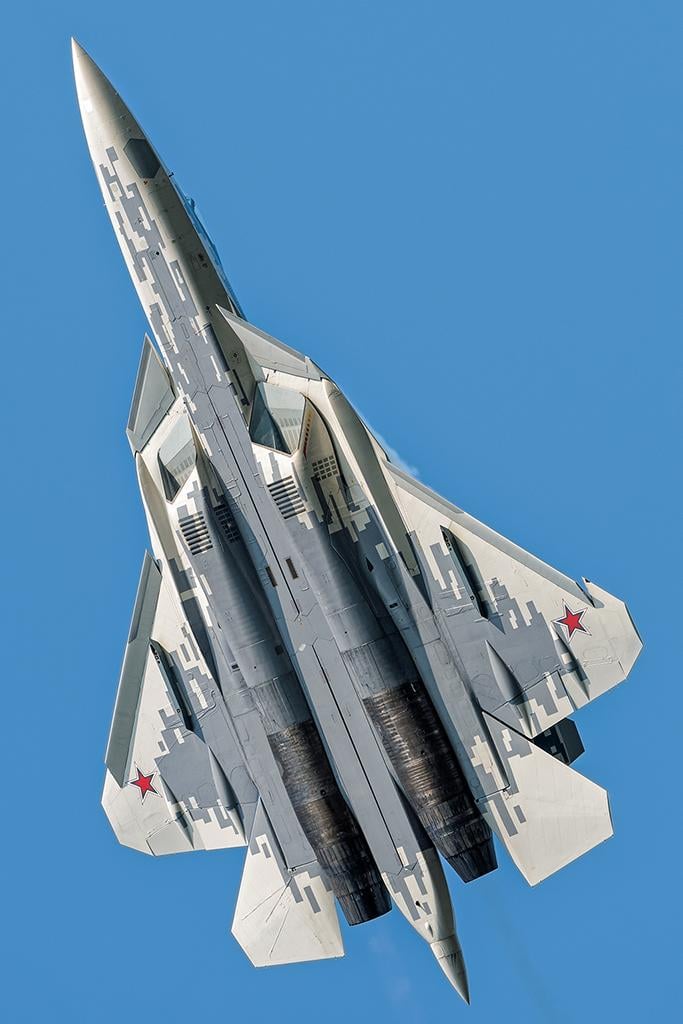
Su-57 Felon
The new-generation Sukhoi Su-57 Felon multirole fighter combines the functions of an air-superiority fighter and strike aircraft. It carries the weapons in two very roomy internal bays that are arranged in tandem and occupy the entire length of the ventral surface of the fuselage. Credit: Piotr Butowski
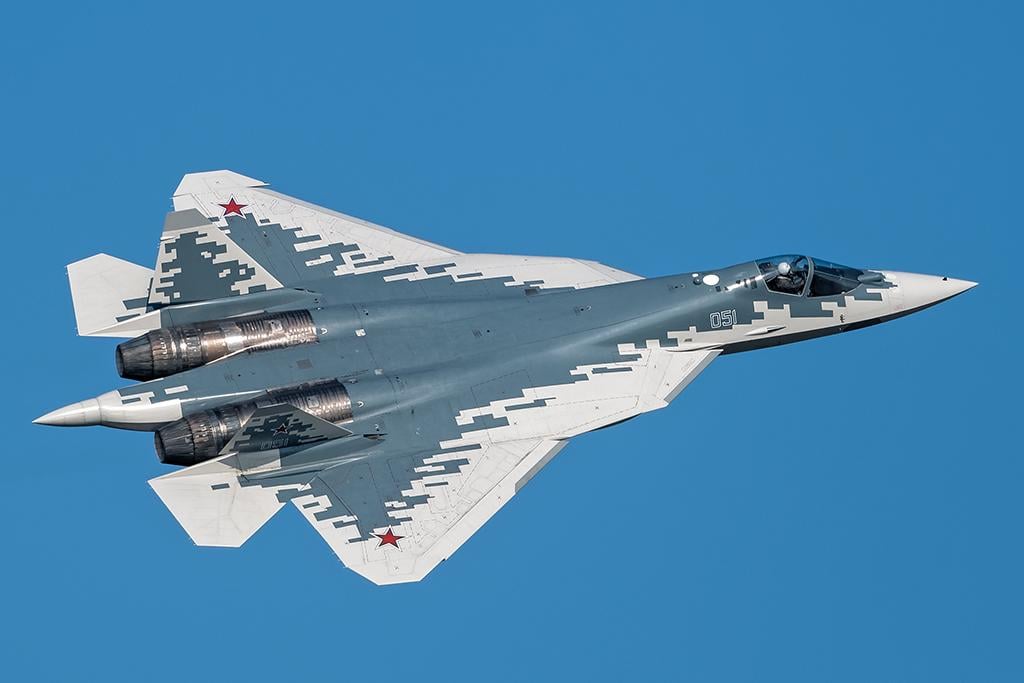
Su-57 Felon
Each bay of the Sukhoi Su-57 Felon multirole fighter can accommodate two 14-ft., 1,500-lb. weapons side by side, including air-to-air missiles (AAM) with a range of 190-mi. and air-to-ground munitions that can travel 310 mi. Credit: Piotr Butowski

Su-57 Felon
After 10 years of tests, the first Sukhoi Su-57 Felon fighter will be handed over this year to the Russian Aerospace Forces, which have ordered 76 fighters to be delivered by 2027. Credit: Piotr Butowski
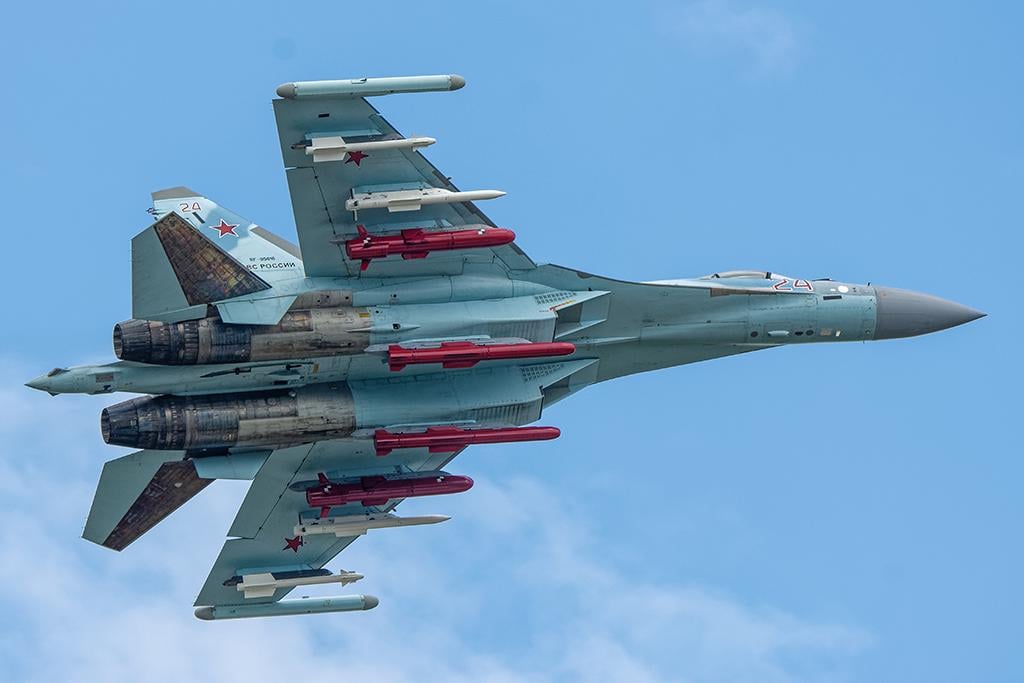
Su-35S Flanker-M
The Sukhoi Su-35S Flanker-M is the most advanced fighter in operational service in Russia—that is, until the Su-57 enters service. The Su-35S retains the aerodynamics of the legacy Su-27 Flanker but has a digital fly-by-wire flight control system similar to that of the Su-57. The Su-35’s AL-41F-1S engines are slightly simpler versions of the AL-41F-1 on the Su-57. The Su-35’s aiming sensors are simpler and cheaper than those in the Su-57, but the configuration of the fire control system is the same. The weapon set is also similar, except that it has no internal bay. The pictured Su-35S is armed with Kh-38M air-to-ground munitions, Kh-35U anti-ship missiles, R-77 and R-73 AAMs and Khibiny-M electronic countermeasures (ECM) pods. Russian Aerospace Forces received 98 Su-35S in 2014-20. Twenty-four fighters were delivered to China, and deliveries of 31 Su-35 aircraft to Egypt are underway. Credit: Piotr Butowski

Su-34 Fullback
The main task of the Sukhoi Su-34 Fullback fighter-bomber is tactical interdiction, which involves cutting off the enemy’s front-line troops from supplies from the rear. For this purpose, the Su-34 conducts strikes on important targets, such as communication hubs, military convoys and depots, deep behind the front line and in heavy air-defense environments. Credit: Piotr Butowski

Su-34 Fullback
Flying near the ground with four tons of weapons, the Sukhoi Su-34 Fullback fighter-bomber can reach targets within an operational radius of 370 mi., or 680 mi. when flying at high altitude. Since 2015, the Russian air contingent in Syria has been relying on Su-34s. Credit: Piotr Butowski

Su-34 Fullback
The Su-34 Fullback fighter-bomber and its upgraded Su-34M version are a priority for the Russian military in the years to come. Credit: Piotr Butowski

Su-34 Fullback
The Russian Aerospace Forces have received 120 Su-34s in the past decade, but they still have more than 100 older Su-24 Fencers that will need to be replaced this decade. Credit: Piotr Butowski
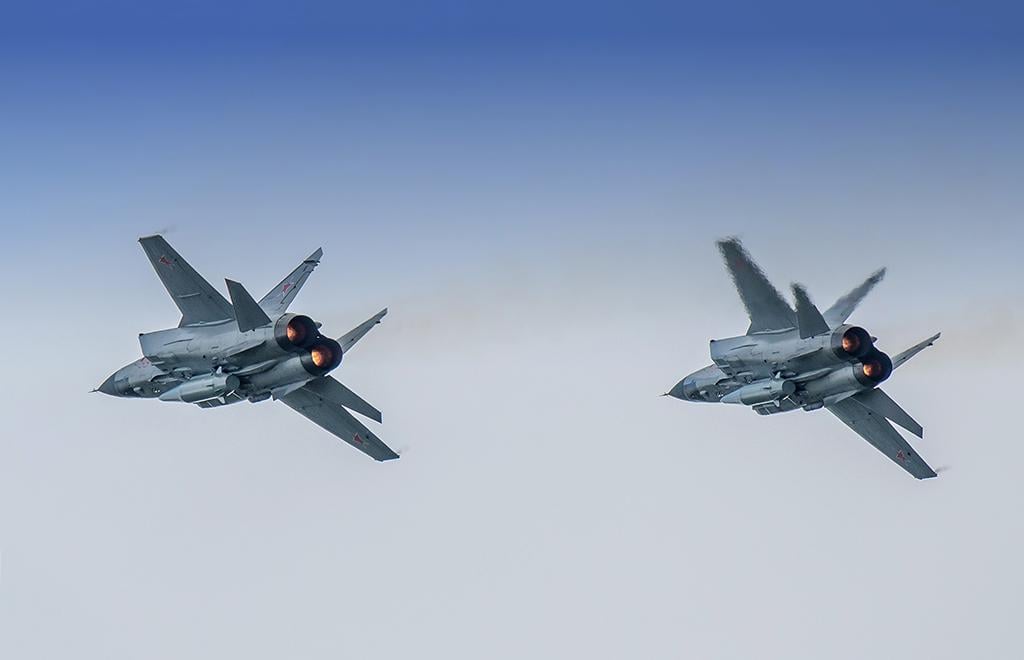
MiG-31K Foxhound-D
The Mach 2.8 Mikoyan-Gurevich MiG-31K Foxhound-D aircraft carries a Mach 10 “izdeliye 292” ballistic missile—an airborne version of the surface-to-surface Iskander missile system (SS-26 Stone)—on the centerline pylon. Together, they form the 9A-7760 Kinzhal (Dagger) airborne strike system revealed by Russian President Vladimir Putin in his annual state-of-the nation speech on March 1, 2018. He said the system can deliver “nuclear and conventional warheads in a range of over 2,000 km. [1,240 mi.].” Credit: Piotr Butowski
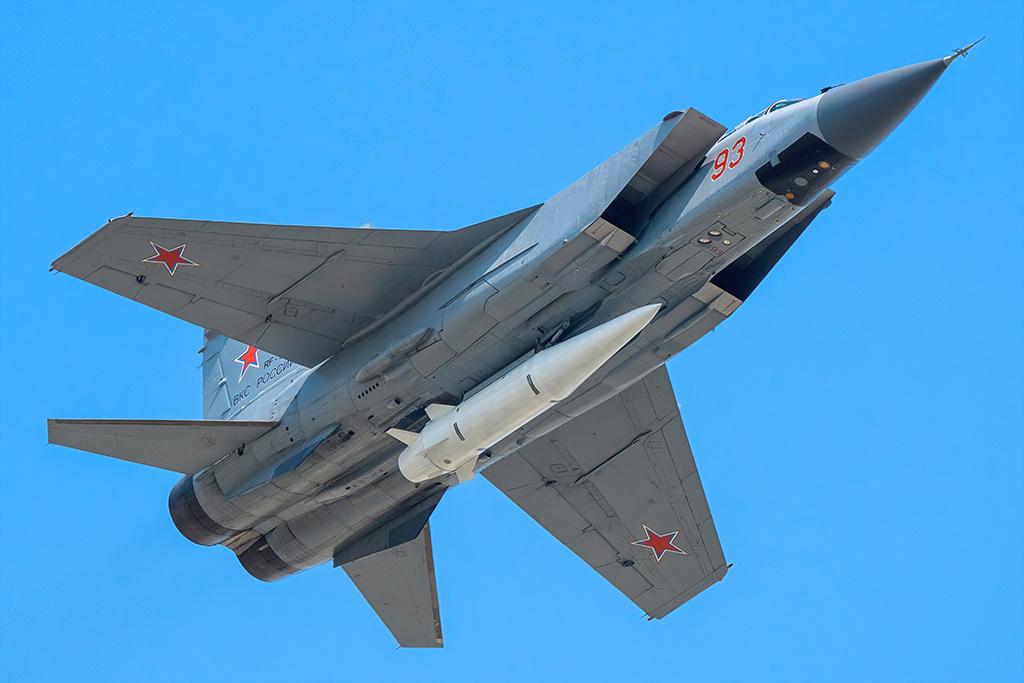
MiG-31K Foxhound-D
The first test squadron of 12 Mikoyan-Gurevich MiG-31K aircraft is deployed at Akhtubinsk in southern Russia. In February 2020, Col. Gen. Alexander Lapin, commander of Russia’s Central Military District, told the press that another unit—the regiment in Kansk, in central Russia—will be reequipped with Kinzhal systems by 2024. In addition to the MiG-31K squadron, Russia has about 120 MiG-31BM intercepting versions in service. Credit: Piotr Butowski

MiG-35S Fulcrum-F
In front of the Mikoyan-Gurevich MiG-35S at the MAKS 2019 air show, from the left, are the 75-mi.-range Grom gliding munition, the modular Kh-38M air-to-surface missile and the Kh-35U anti-ship missile. Credit: Piotr Butowski
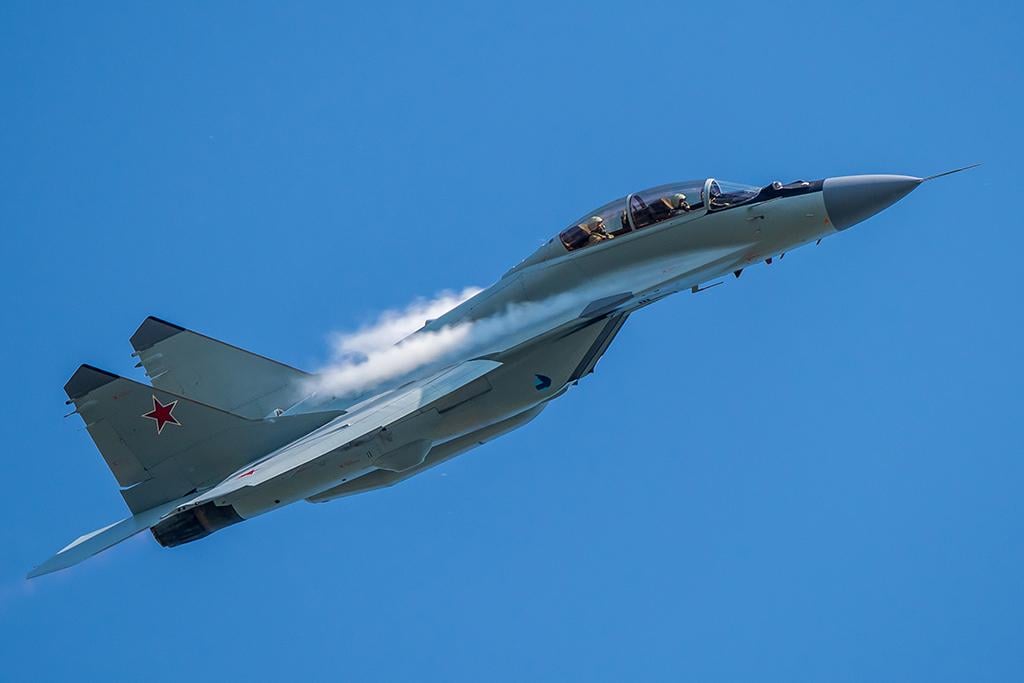
MiG-35S Fulcrum-F
The Mikoyan-Gurevich MiG-35 Fulcrum-F is a capable aircraft. However, the Russian Aerospace Forces have three Sukhoi fighters at their disposal, from the low-cost Su-30SM, to the more advanced Su-35 and the expensive Su-57, so they are not interested in yet another type of fighter. Only six new MiG-35s were acquired, which, after evaluation, will most likely go to the air force’s Strizhi (Swifts) aerobatic team at Kubinka air base. The order’s main purpose was export promotion. So far, 46 MiG-29M fighters have been exported to Egypt; more contracts are expected. Credit: Piotr Butowski

Mi-28NM Havoc
The Mil Mi-28NM Havoc is a modernized version of the fairly conventional Mi-28N combat helicopter with improved targeting systems and new weapons. The most important element of the new helicopter is integration of the lightweight multitarget guided missile (LMUR) with a range of 9 mi. compared to 4 mi. for the Ataka and Khrizantema anti-tank guided missiles (ATGM). The LMUR (which has not been unveiled to the public) has a thermal imaging seeker; the image from the seeker is transmitted to the helicopter, from which the operator indicates the target. Credit: Piotr Butowski
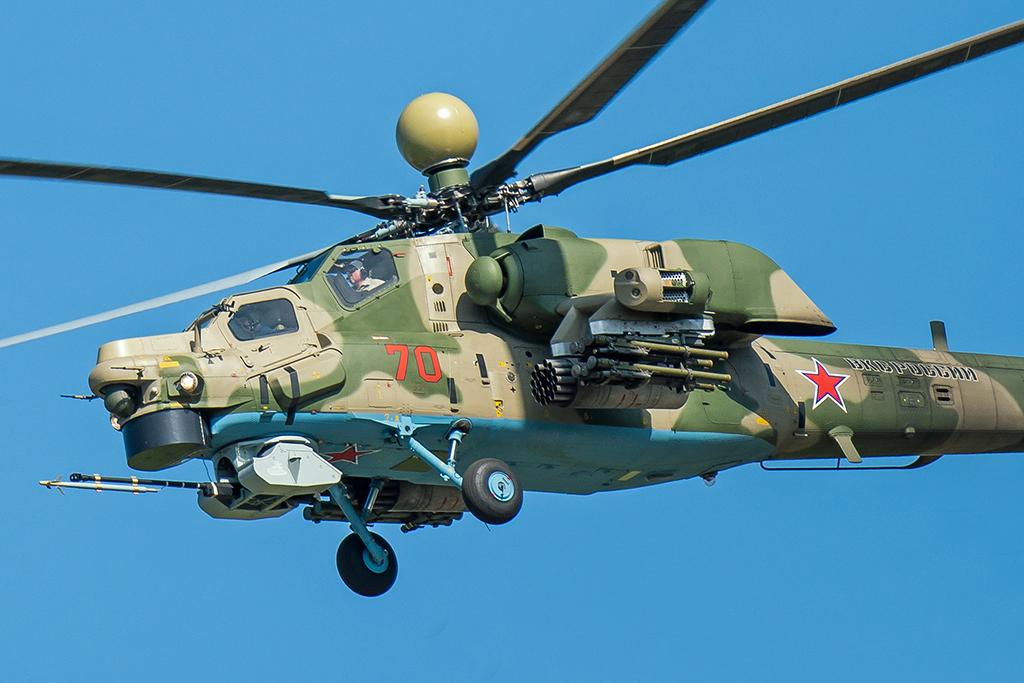
Mi-28NM Havoc
In March 2019, the Mil Mi-28NM prototype was tested in Syria. On June 27, 2019, the Russian defense ministry ordered 98 Mi-28NM helicopters for delivery in 2020-27; by August of this year, the deliveries had not yet started. The photo shows the Mi-28NM “70,” the first helicopter of the preseries batch made in 2019. Credit: Piotr Butowski

Ka-52 Hokum-B
Unlike any other combat helicopter in the world, the Kamov Ka-52 Hokum-B seats its pilots side by side, rather than in tandem. The wide cockpit creates so much free space in the helicopter’s nose to allow for a powerful radar and an electro-optical targeting sensor beneath the radar. The Russians place great emphasis on self-defense in their combat helicopters. In the Ka-52, titanium and ceramic plate armor is provided for the cockpit and other vital areas. Two-directional infrared jammers are installed at the sides of the lower part of the fuselage; flare or radar decoy dispensers are fitted at the wingtip fairings. Credit: Piotr Butowski

Ka-52 Hokum-B
The Russian Aerospace Forces have about 125 Kamov Ka-52s. The deliveries continue at a rate of 15-20 helicopters per year. Egypt has received 46 Ka-52E export versions. On Aug. 10, the first Ka-52M helicopter with modernized aiming sensors and new weapons, including the LMUR missile, began testing. Russia’s defense ministry declared its intent to purchase 114 new Ka-52Ms in 2022-2027. Credit: Piotr Butowski





